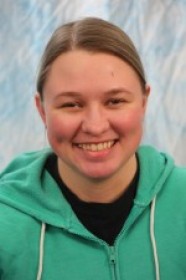
PhD Thesis Proposal
April

1:00 pm to 12:00 am
Event Location: GHC 4405
Abstract: I am proposing the development and testing of a novel augmented reality system for stereomicroscopic surgeries. This system will allow surgeons to view real-time medical image data as an in-situ overlay within the surgical field. Our application for the device is in-situ intraoperative OCT during surgeries on the anterior segment of the eye. There are a number of clinical applications for which real time, in situ visualization of otherwise transparent structures of the eye would be beneficial to surgeons. The primary motivating application for this project is the surgical treatment of glaucoma.
In order to produce a system that will work well with surgeons, the overall design must not only consider what information we can overlay but also what information the surgeons can perceive through the microscope, as well as what information they actually need to assist with their surgery. These three goals correspond to the three aims of this proposal.
What we can display: We are limited by the available technology as to what can be overlaid under the microscope. Flat (un-tilted) images at infinity are trivial to create within the microscope, but are of limited usefulness as they contain no depth information. Planar in-situ images are readily achievable, but are limited in the information that they can contain. Curved surfaces can be more informational and intuitive, but are difficult to create optically. The goal is to build a system that can provide the most information to the surgeon.
What users can perceive: Because the optics of the microscope distort essential perceptual cues, the capability to project an image containing certain information does not necessarily imply that the information will be perceived correctly by the user. Why provide a complicated curved-surface image if the user cannot correctly perceive it?
What information surgeons need: If information can be displayed and correctly perceived, we must also ask, is it useful? In-situ information display has just as much capability to distract as it does to help. An integral part of the proposal is collaboration with clinical researchers to determine what information they want to have overlaid, and how best to display it.
Committee:George Stetten, Co-chair
John Galeotti Co-chair
Roberta Klatzky
Thomas Furness, University of Washington